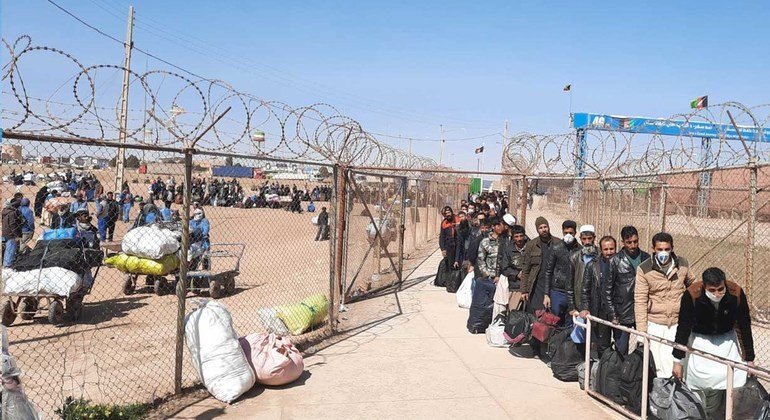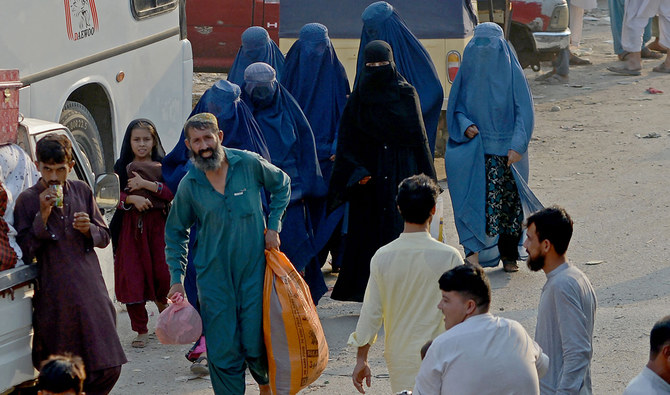Trapped Between Borders: Afghan Refugees Face Uncertain
Futures
Hundreds of Afghan families continue to cross into Kandahar
and Nangarhar provinces from Pakistan, a journey fraught with fear and
uncertainty. Many of these individuals have never set foot in Afghanistan
before. As Pakistan intensifies its efforts to expel "illegal foreigners,"
many Afghans residing there face the daunting prospect of starting anew in a
homeland they scarcely know.
The Durand Line, a colonial-era border established in the
1890s, separates Pakistan from Afghanistan. The New Humanitarian has reported
from both sides, capturing the anxiety of Afghans forced to return and those
striving to remain in Pakistan amid growing threats and expulsions.
Usman, a 30-year-old father of six, is among those dreading
the transition. Born in Pakistan to Afghan parents, he considers Pakistan his
home despite its challenges. "In Afghanistan, we know no one," he
told The New Humanitarian.
Since Pakistan announced plans to deport all undocumented
foreigners last October, the situation has become dire for Afghans like Usman.
Many are voluntarily returning to avoid forced expulsion. An estimated 3.5
million Afghans live in Pakistan, with fluctuating numbers due to decades of
conflict and displacement.
Between mid-September and early May, over 575,000 Afghans
either returned or were deported to Afghanistan, according to the UN's
migration agency, IOM. The Pakistani government had planned to extend
deportations to include those with Proof of Registration Cards by mid-April,
but the deadline has been extended to the end of June. This extension
temporarily shields approximately 800,000 Afghans from immediate deportation.
As the deadline approaches, reports of police raids in
Afghan neighborhoods have surfaced. Afghan families accuse police of
confiscating property and threatening women with sexual violence. Homes have
been bulldozed, adding to the community's fears.
Returning to Afghanistan presents its own set of challenges.
Decades of conflict, natural disasters, economic sanctions, and banking
restrictions have left the country in ruins. Dayne Curry, the country director
for Mercy Corps in Afghanistan, highlighted the lack of a clear plan to
integrate the returnees into the fragile Afghan economy.
"We do not want to start life from scratch,"
echoed many Afghans in Chaman, a Pakistani city bordering Afghanistan. Despite
Pakistan’s economic crisis, which has impacted both locals and refugees,
Afghans prefer the relative stability over the uncertainty in Afghanistan. The
Taliban’s regime, accused of numerous human rights violations, particularly
against women, further fuels their reluctance.
For example, Gul, a 55-year-old Afghan woman, has lived in
Pakistan for over 30 years. The recent travel restrictions have made it
difficult for her to visit family in Afghanistan. “Spending one night in
Afghanistan is equivalent to spending three years in Pakistan,” she said,
emphasizing the severe hardships back home.
Similarly, Bibi, a 35-year-old Afghan woman, faces the
prospect of deportation despite holding a Proof of Registration Card. She lost
her home and belongings to afford medical care for her son in Pakistan and
dreads the idea of returning to Afghanistan with nothing.
Across the border, Noor Alam, who returned to Afghanistan
after facing police threats in Pakistan, and Imran, who fled with his family,
echo the sentiments of many Afghans: fear, uncertainty, and a sense of
abandonment. The transition is not only logistical but deeply emotional, as
many have lived their entire lives in Pakistan.
The influx of returnees strains Afghanistan’s limited
resources, particularly in economic hubs like Kandahar. Local aid efforts,
while significant, are insufficient to meet the growing needs of the displaced
population. Mohammad Ehsan Nazari of Mercy Corps in Kandahar noted the
challenges returnees face in adapting to a drastically changed environment.
As the deadline looms, Afghans on both sides of the Durand
Line are trapped in a precarious situation, struggling to find stability in an
increasingly unstable world.








